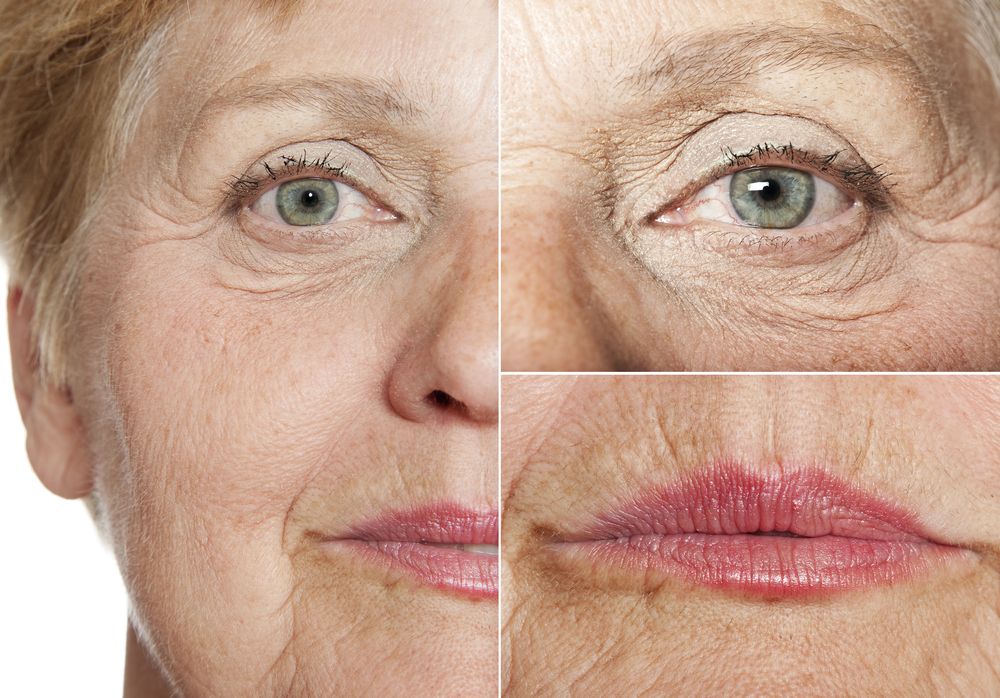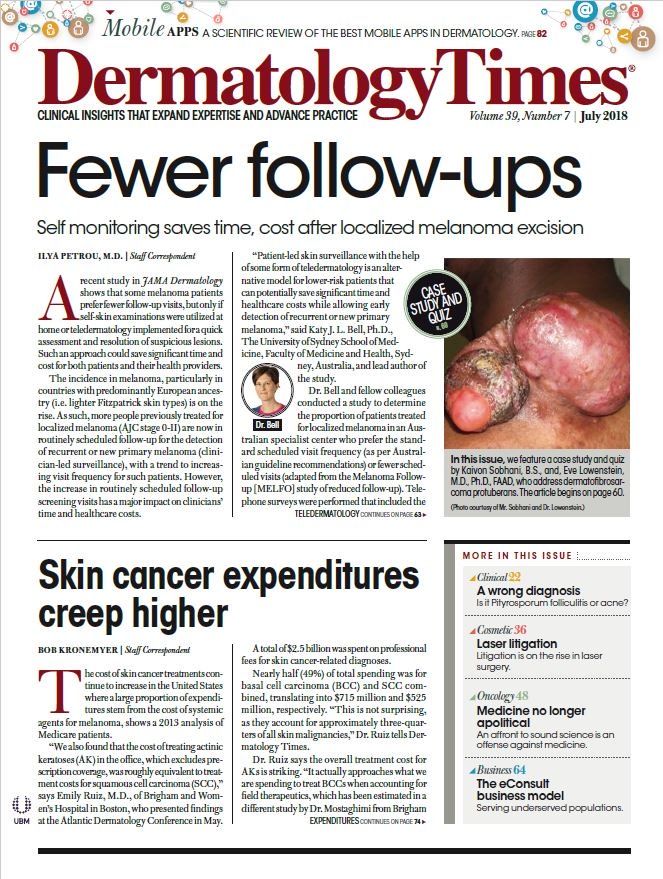- Case-Based Roundtable
- General Dermatology
- Eczema
- Chronic Hand Eczema
- Alopecia
- Aesthetics
- Vitiligo
- COVID-19
- Actinic Keratosis
- Precision Medicine and Biologics
- Rare Disease
- Wound Care
- Rosacea
- Psoriasis
- Psoriatic Arthritis
- Atopic Dermatitis
- Melasma
- NP and PA
- Skin Cancer
- Hidradenitis Suppurativa
- Drug Watch
- Pigmentary Disorders
- Acne
- Pediatric Dermatology
- Practice Management
- Prurigo Nodularis
- Buy-and-Bill
Publication
Article
Dermatology Times
Where full-field erbium outshines fractional
Author(s):
Despite the popularity of fractional ablative resurfacing, full-field erbium resurfacing still has an important role in skin rejuvenation.
Female aesthetic procedures (©Kuttelvaserova/StuchelovaShutterstock.com)

Despite the popularity of fractional ablative resurfacing, full-field erbium (2,940 nm) resurfacing still plays an important role, says Joel L. Cohen, M.D., a dermatologist in Greenwood Village, Colorado.
Dr. Cohen spoke with Dermatology Times about fractional resurfacing vs full-field resurfacing.
“Our excitement for fractional resurfacing has led us to use so much fractional that there are times where the results for specific areas, such as perioral and periocular etched lines, may be suboptimal after a couple of treatments. So, I revert back to full-field resurfacing in the areas that really need it,” he said.
“In my practice, I like to use a com-bination of lasers on the face different lasers for different areas. I might use full-field 2,940 nm erbium often around the mouth or eyes, then either fractional CO2 or fractional erbium on the rest of the face.”
With full-field erbium, “The reality is, it’s worth the downtime. The mouth and eyes typically have more etching than other areas of the face. But when other areas have extensive photodamage, we can use full-field erbium in those areas as well.”
FULL-FIELD ERBIUM
Many patients have more photo-damage around the mouth or eyes, and sometimes the forehead or cheeks, he said. With full-field erbium, “I believe it’s picking the right tool for the right job. It provides more significant results,” often achieving marked improvement with just one treatment.
But the healing time is longer with 7-10 days for re-epithelialization. And, persistent erythema is an issue for patients. “We cannot yet predict who’s going to have more persistent erythema. But usually in my practice, it’s in the range of 3-7 weeks. I typically do not treat that with topical steroids or other topical products we just try to color match patients (with concealer makeup) and make sure that they use photoprotection very diligently to prevent hyperpigmentation as they heal.”
PATIENT COUNSELING
Considering the very real incidence of post-inflammatory erythema after full-field erbium resurfacing, Dr. Cohen counsels patients to plan accordingly and avoid scheduling the treatment immediately prior to a planned event, like a wedding. Wait three to four months after the procedure for the full eff ect of treatment to manifest. If that doesn’t work for a patient, “I’ll be inclined to do fractional erbium or fractional CO2, which don’t cause this type of delayed redness, but also won’t have nearly as much improvement for perioral and periocular etching with just one treatment session.”
PREPARATION FOR TREATMENT
In preparation for full-field erbium resurfacing, “I give everybody antivirals two days before the treatment until about 10 days after. I don’t use prophylactic anti-biotics.” Additionally, patients may use a growth factor product such as Tensage (Biopelle), Bio-Cream (NeoCutis) or TNS Essential (SkinMedica) for several weeks, along with a topical retinoid, pre-proce-dure. “I no longer have them stop topical retinoids a week prior, and just have them use topical retinoids right up to the treatment.”
TREATING THE MOUTH AREA
For treatment around the mouth, “I typically give patients an infraorbital and a mental block, and supplement those with a perioral sulcus block. Then I’ll perform full-field erbium with no coagulation. I do 100 µ passes.” Depending on the depth and severity of the etching (facilitated by incorporating a scale he co-authored), total treatment depth ranges from a typical 400 µ up to even 700 µ for very severe etched in lines. “I perform passes until reaching an end point of pinpoint bleeding, also going back to certain persistent lines focally at 30 µ until I see them eff aced. That’s why there’s a
range of treatment depths.”
TREATING THE EYE AREA
Around the eyes, “I do things a little dif-ferently than around the mouth.” After giving patients internal stainless steel eye shields, he employs the erbium laser with coagulation at around 50, treating at approximately 80 µ depth and blending outward as he gets outside the orbital rim and lateral to the lateral canthal rhytids.
TREATING OTHER FACICAL AREAS
“Then for the rest of the face, I’ll use fractional CO2 or fractional erbium, usually at around 25% density.” In counseling, he advises patients that diff erent areas will look diff erent after treatment, showing them pictures of other patients at various healing stages. “I want to make sure they understand that the mouth and eyes will have yellow fi brin, and the rest of the face will be pretty red and swollen.”
SIDE-BY-SIDE TREATMENTS
Because patients will experience significant healing downtime, and then some degree of persistent erythema after full-field resurfacing, Dr. Cohen often performs same day treatment of the neck and chest with an Arctic Peel (515 nm BBL broadband light/Sciton, plus microlaser erbium peel) or the Halo laser (Sciton).
WOUND CARE
Dr. Cohen encourages good wound care with a mild cleanser and a fragrance-free, hypoallergenic moisturizer such as white petrolatum. “I also give patients hypochlorous acid (Lasercyn Dermal Spray, IntraDerm) so that they spray the whole treatment area for several days post-treatment.” Along with being antimicrobial, “Hypochlorous acid has been found to help with itching, burning and stinging. And it is eye safe. We use it as a skin prep in the office as well. “ Once skin has healed over, patients may start (or resume) a skin care regimen that includes growth factors and a retinoid.
THE FOLLOW-UP
He typically schedules follow-up appointments a few days later and often a week later as well if patients are willing to return while they are healing. “Not everybody is able to do that. Because of the signifi cant wound healing reaction of the skin, some patients aren’t comfortable leaving the house. We try to make it work at times where there may be fewer people in the waiting room.”






